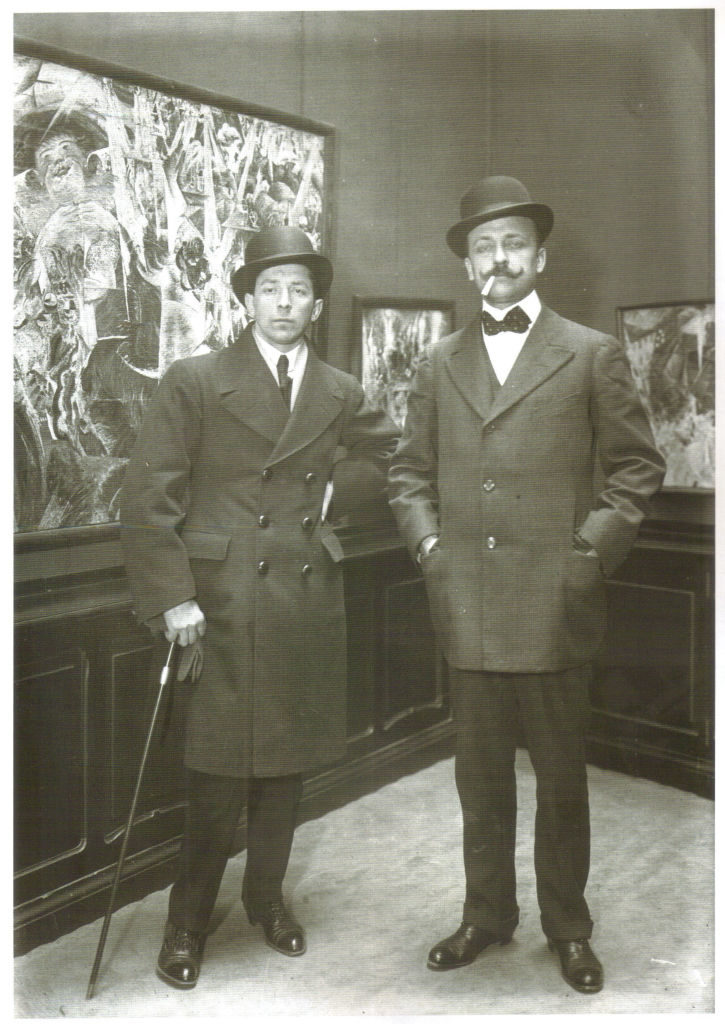Galleries
The Famed Paris Gallery Bernheim-Jeune, Which Held the First van Gogh Retrospective in 1901, Has Closed
The gallery also held the first Futurist exhibition ever to come to Paris in 1912.
The gallery also held the first Futurist exhibition ever to come to Paris in 1912.
Kate Brown &
Naomi Rea

After 150 years in business, the storied Galerie Bernheim-Jeune, which earned an early reputation for presenting the cream of the avant-garde crop, has closed up shop in Paris.
The French newspaper Le Journal des Arts reports that the gallery’s board shuttered the space to pursue other projects. Management quietly announced the pending closure on the gallery’s website in December last year.
“I was president-general director of the company until April 2018, when the advisory board decided on a change of management,” Guy-Patrice Dauberville told the French paper. “Then the new management took the decision to close the gallery.”
The company is now in the hands of Béatrice Dauberville and Stéphane Dauberville, who chose to cease gallery operations for reasons unrelated “to the state of the market,” Guy-Patrice clarified.
Guy-Patrice, an expert on Pierre Bonnard and Pierre-Auguste Renoir, will take the gallery archives with him to continue research on these artists with his daughter, Floriane, in a new space on Boulevard Haussmann. He had run the gallery since 2012.

Italian Futurists Umberto Boccioni and Filippo Tommaso Marinetti at the first Futurist show in Paris, at the Galerie Bernheim-Jeune in 1912. Photo by Fine Art Images/Heritage Images/Getty Images.
After opening in 1863, the family-run Galerie Bernheim-Jeune gained notoriety for its groundbreaking program. Its founder, Alexandre Bernheim-Jeune, maintained friendships with pioneers and avant-gardists including Eugène Delacroix and Gustave Courbet. He was also an early promoter of van Gogh and Cézanne.
In 1874, the gallery presented Impressionist pictures, introducing many Parisians to the young movement. By the turn of the century, Bernheim enlisted his sons, Joseph and Gaston, to take over the business, and in 1901 they mounted the first retrospective exhibition of Van Gogh’s paintings. They hired the art critic and anarchist Félix Fénéon to organize a contemporary art program in 1906 and the next year, the gallery held a revelatory retrospective of Cézanne’s work, just a year after his death. In 1912, Bernheim-Jeune held the first Italian Futurist exhibition in Paris.
The brothers gained celebrity status in the French art world, where they were commonly known as the “Bernheim-Jeune brothers.” Édouard Vuillard painted their portraits in a work titled The Art Dealers, and in 1920, Bonnard depicted the two in painting that is now in the Musée d’Orsay’s permanent collection.

Pierre Bonnard, The Brothers Bernheim-Jeune (1920). Musée d’Orsay, Paris. via Wikimedia Commons.
The Second World War broke apart most of the gallery’s holdings, which were confiscated, stolen, and sold away by occupying German forces. The family spent much of its time after the war trying to retrieve its collection.
Dauberville told Le Journal des Arts he will not continue to use the Bernheim-Jeune name, so that it doesn’t become “overused.”
“Despite the closure of Bernheim-Jeune, my father, Guy-Patrice Dauberville, and I continue our studies on the works of Pierre Bonnard and Pierre-Auguste Renoir which are not yet listed in our catalogue raisonné with our archives, as well as publications of specialized books such as the Matisse or Modigliani chez Bernheim-Jeune, Floriane Dauberville tells artnet News. The gallery began producing publications in 1914; it was among the first institutions to release a book on Cézanne. In the years since, notable publications have included the catalogue raisonné of Pierre Bonnard’s work (1973), as well as catalogues raisonné of Renoir (2010) and Modigliani (2015).